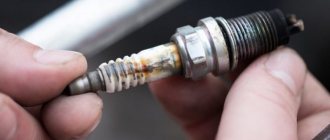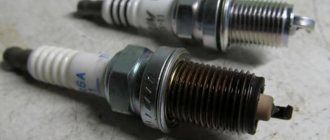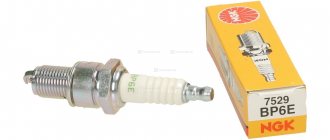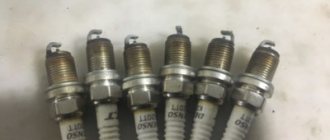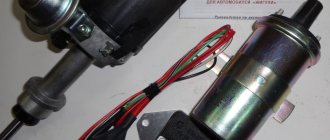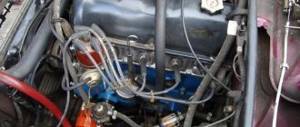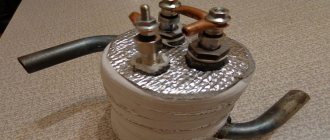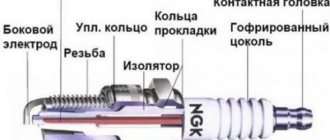Spark plugs in a diesel engine ensure guaranteed starting of the power unit when cold. The principle of their operation is to bring fuel under high pressure to the required temperature using a special relay. A diesel engine has as many spark plugs as there are cylinders in it. There is one spark plug for each engine cylinder.
The principle of switching on a diesel engine
The fuel-air mixture, which is under pressure in the cylinder, is heated to 900°C. To ensure fire conditions, the structure is highly durable. The combustible mixture is ignited by the compression ratio, and not by the spark plug. At ambient temperatures below plus 5°C, down to severe frosts, the combustion chamber requires forced heating using ceramic or pin glow plugs.
The glow plug in a diesel engine is capable of heating the injection zone to 1000°C in a matter of seconds. When the diesel engine is turned on, these devices operate until the coolant temperature reaches plus 75°C.
Due to the increased demands of environmentalists, thanks to their unique properties, spark plugs begin to function at idle speed. The design of these parts helps reduce the amount of harmful emissions from a diesel engine into the atmosphere.
Principle of operation
Unlike conventional spark plugs, it ignites the fuel not with a spark, but with the help of a heating coil. The glow plug is started by turning the ignition key. At this time, all the relevant indicators about its operation light up on the dashboard. They start only to warm up to operating temperature, which happens in less than 4 seconds.
It is worth noting the fact that if the glow plugs are faulty, then it will be possible to start a diesel car only with a properly functioning starter. After the engine has been successfully started, electricity is still supplied to the glow plug for some time. This is necessary so that the diesel engine burns out completely without any residue. Complete combustion of the fuel ensures a quiet start of the engine, and also reduces the amount of harmful emissions into the atmosphere.
Design features of various types of candles
These structures can be made of either closed ceramics or open metal. The heating element is made in the form of a spiral.
Metal pin structures have spirals: heating and adjustment. Thanks to the first, rapid heating occurs, the second serves to protect the structure from overheating.
The composition of ceramic parts is more complex:
- Metal body.
- Heating tube.
- Connecting bolt and nut.
- Adjustment spiral.
- Ceramic filling.
- Central electrode.
- Threaded part.
Ceramic parts are preferred due to their ability to produce heat quickly and provide very high temperatures.
Under the influence of electric current, the coil heats up. The high temperature in the motor prevents the element from heating above 850°C; heating lasts for a short time: from 4 seconds to 2 minutes. The duration of heating is monitored by an electronic control unit, which monitors the temperature of the coolant through special sensors.
While heating continues, the control light located on the instrument panel lights up. Turning off the lamp indicates that the engine is completely ready to start.
The glow plugs continue to work after the engine is turned on, continuing to warm up and ensuring the most complete combustion of the air-fuel mixture, reducing harmful emissions.
Pin glow plugs
In a pin plug, the glow pin is hermetically pressed into housing 5, providing a good gas seal. The pin consists of a heat-corrosion-resistant filament rod 4, inside of which there is a spiral filament in a compacted filler 9 made of magnesium oxide powder. This filament consists of two resistors connected in series: a heating coil placed at the end of the incandescent tube and a control coil. The heating coil has a resistance that is practically independent of temperature, and the control coil has a positive temperature coefficient. When a glow plug operates, it heats up to a temperature of 850°C and operates for 4 s to 2 min. depending on the type of spark plug and engine temperature. The supplied fuel is heated to the optimal combustion temperature.
The duration of the preheating period is controlled by the glow plug control unit, which monitors the engine temperature via a coolant temperature sensor and modifies the preheating time.
A warning light installed on the panel informs the driver that heating is taking place. The light goes out after heating is complete, indicating that the engine can be started. After starting the engine, the glow plug may continue to operate for some time, depending on the engine temperature. This helps improve fuel combustion while the engine warms up and reduces exhaust emissions. Typically, the heating is turned on with the ignition key by turning it to the second position. However, some car models are equipped with a preheating system that turns on only when the driver's door is open.
Rice. Pin glow plug: 1 – electrical voltage supply plug; 2 – insulating washer; 3 – double seal; 4 – rod; 5 – body; 6 – containment seal; 7 – heating coil; 8 – glow tube; 9 – filler
Methods for checking spark plugs
You can check the voltage in the elements using a multimeter or car battery.
In order not to dismantle the device, just connect it to the battery. The connection diagram is as follows: the minus is connected to the spark plug body, and the plus to the terminal, respectively. In a working unit, the coil heats up within a few seconds. The absence of heat indicates the need to replace the device.
When checking the spark plugs in the injectors, you need to unscrew the elements and examine the glow of the pins, which should glow. A difference in the glow intensity of at least one element indicates the need for additional verification by measuring its resistance. In order to avoid rapid failure of the remaining elements, the entire set is replaced at once, regardless of how many parts turned out to be defective.
It rarely happens that more than two devices fail, in which case it is necessary to check the electrical wiring or electronic control unit.
Using a multimeter, the performance of a dismantled spark plug is determined by the “diagnosis” method.
In modern cars, these components can be checked through self-diagnosis, additionally using an indicator located on the instrument panel, which gives a signal when a spark plug breaks.
Description of signs of malfunctions of incandescent elements
Failures of glow plugs are manifested by the following defects:
- The engine does not want to start.
- Uneven operation of a cold engine.
- The appearance of white exhaust gases.
If the car owner has recently replaced all the spark plugs, then the reason may lie in a malfunction of the element due to the fault of the manufacturer. The defective part must be unscrewed and replaced with a new copy. Malfunctions of incandescent elements are most noticeable in winter. A decrease in ambient temperature causes more signs of faulty filament elements to appear.
To facilitate the dismantling process, a special diesel engine glow plug puller is used. It must be used in conjunction with a tool adapted for a square or hexagonal head.
Why do spark plugs fail?
The service life of modern diesel glow plugs is 60 thousand kilometers, subject to operating conditions. If damage to the shell of the spiral occurs, the entire device will fail earlier, because dirt and moisture penetrate into the resulting crack, and the spiral closes to the housing. The shell may fail for the following reasons:
- failure to observe thoroughness and accuracy when installing the glow element into the motor;
- the appearance of electrochemical corrosion over a long period of time;
- installation of spark plugs that do not correspond to the models of this type of diesel engine.
These devices are very important - they ensure both uninterrupted starting of a diesel engine at sub-zero ambient temperatures and significantly reduce the amount of exhaust harmful gases.
Glow plug - design and principle of operation
As all car enthusiasts know, a gasoline internal combustion engine, unlike a diesel engine, uses spark plugs. At the same time, in the combustion chamber of a diesel engine, the fuel is ignited due to a multiple increase in air pressure and its temperature with a sharp compression of the air by the piston. In winter, special devices called glow plugs are used to warm up the combustion chambers. As soon as the driver turns on the ignition, the glow plugs begin their work. At the same time, it takes less than two seconds for the glow plug to fully warm up.
Glow plug placement
In all modern diesel engines with direct fuel injection, glow plugs are located in the cylinder head. Their tips protrude slightly inside the combustion chamber. In this case, each cylinder must contain its own glow plug.
In most modern diesel units, glow plugs work not only during startup, but also for a certain period of time after startup. This is necessary for more stable engine idling.
Glow plug design
The design of the glow plug consists of a threaded body, inside of which a pin with a heating element is pressed. In turn, the heating element consists of two spirals connected in series, the first of which serves as a current stabilizer, and the second is directly responsible for heating.
Glow plug operation
After turning the engine ignition on at idle, the glow plugs are connected to the electrical supply, and almost all the energy is used by the heating coil. At this time, the temperature of the candle instantly increases.
After rapid warming up, the second spiral begins to perform its functions, which is a resistance with a positive temperature coefficient. In other words, as the temperature of the spark plug increases, the resistance of the second coil increases, and it limits the current of the glow coil.
As you can see, a glow plug is a specific self-regulating element. Which consumes maximum current when cold, and automatically reduces current consumption after warming up. In this case, the filament coil is made of a special metal that does not change its resistance as the temperature rises.
This video will answer the question why glow plugs are used in diesel engines:
Video on how you can check the performance of glow plugs with your own hands:
How to check the glow plugs yourself:

